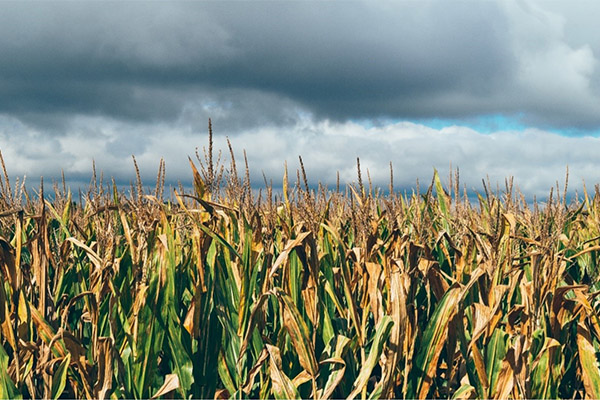Modeling Agriculture Matters for Carbon Cycling
Better modeling agriculture produces more accurate representations of carbon and energy.
The Science
Global land models increasingly include representations of crops, which can affect the local and regional climate. However, there is a limited understanding of how crop rotation and different crop cultivars affect carbon and energy fluxes from the land surface. This new study implements crop rotation and spatially varying crop parameters in the Energy Exascale Earth System Model Land Model (ELM) to more realistically represent agricultural practices. It shows that varying crop parameters improve carbon and energy flux estimation from cropland areas, producing simulations that are significantly closer to observed values.
The Impact
These findings emphasize the importance of accurately representing agricultural management practices and differences in crop growth characteristics in global land models. Accurately capturing these will improve the feedbacks between crops and climate. The feedbacks are especially important for next generation Earth system models (ESMs) that focus on improving the human–Earth system interactions. This work is an initial step toward more realistic crop representations in ESMs and demonstrates a practical approach to modeling crop rotation. This work also highlights the importance of capturing spatial differences in crop growth characteristics.

Figure 1. The use of spatially varying as opposed to constant crop parameters can have a large impact on carbon fluxes. The top left sub-panel shows gross primary productivity simulated based on spatially varying parameters. The rest of the sub-panels show the difference (top row) and percent difference (bottom row) between gross primary productivity simulated using spatially varying and constant parameters.
Summary
The study examines the impact of using constant versus spatially varying crop parameters (Fig. 1) using a novel, realistic crop rotation scenario in the E3SM Land Model version 2 (ELMv2). Researchers implemented crop rotation using ELMv2’s dynamic land unit capability. They then calibrated and validated the model against observations collected at three AmeriFlux sites in the U.S. Midwest with corn–soybean rotation. The calibrated model closely captured the magnitude and observed seasonality of carbon and energy fluxes across crops and sites. Regional simulations of the Midwest with the calibrated model showed that spatially varying only a few crop parameters across the region, as opposed to using constant parameters, had a large impact with the carbon and energy fluxes both varying by up to 40% (Fig. 1). These results imply that large scale ESM simulations using spatially invariant crop parameters that do not represent agricultural realities may result in biased energy and carbon flux estimations from agricultural land. They underline the importance of improving human–Earth system interactions in ESMs.
Publication
- Sinha, Eva, Ben Bond‐Lamberty, Katherine V. Calvin, Beth A. Drewniak, Gautam Bisht, Carl Bernacchi, Bethany J. Blakely, and Caitlin E. Moore. “The Impact of Crop Rotation and Spatially Varying Crop Parameters in the E3SM Land Model (ELMv2).” Journal of Geophysical Research: Biogeosciences 128, e2022JG007187 (2023). [DOI: 10.1029/2022JG007187]
Related Link
- Modeling Agriculture Matters for Carbon Cycling, Pacific Northwest National Laboratory News.
Funding
- This research was funded by the Department of Energy (DOE), Office of Science, Biological and Environmental Research program. Funding for the AmeriFlux data portal was provided by the DOE Office of Science. The field study conducted at the US-UiC site was funded by the DOE Center for Advanced Bioenergy and Bioproducts Innovation, the Energy Biosciences Institute at the University of Illinois Urbana-Champaign, and the Global Change and Photosynthesis Research Unit of the United States Department of Agriculture/Agricultural Research Service.
Contact
- Ben Bond-Lamberty, Pacific Northwest National Laboratory
This article is a part of the E3SM “Floating Points” Newsletter, to read the full Newsletter check:



